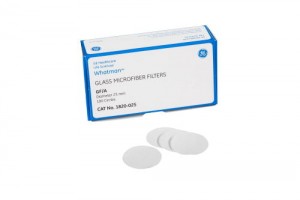How Is Filter Paper Made
Throughout the different stages of chromatography, laboratory filter newspaper plays a huge role in separation and purification processes. These filtration products are highly useful in solvent filtering, cellulose assay likewise as a number of industrial applications, and are a must-have for any lab or industrial process that involves separation and purification.
Going beyond being mere purification products a laboratory filter newspaper comes in different variants for different purposes. Each blazon of laboratory filter paper offers varying capacities, different filtration levels, and is also fabricated for specific samples in detail applications. Awarding of this microfiltration product in the right industrial and research needs tin can be highly beneficial to the overall chromatographic procedure.

Quantitative Filter Papers
Quantitative Filter Papers
Quantitative filters are designed specifically for quantitative assay of samples. This type of filter paper is also used to set samples for instrumental analysis and also for gravimetric analysis. They are available in ashless, hardened low ash and hardened ashless formats. Each format of quantitative filter paper is designed for specific quantitative assay with specific samples and reactants.
Ashless papers are useful for critical procedures involving analytical filtering. Hardened low ash filter papers, on the other manus, piece of work all-time in cases where greater chemical resistance is required and precipitates are to be retained with greater precision. Hardened ashless formats of quantitative filters have high wet forcefulness and can be used for a wide range of critical filtration purposes.
Glass Microfiber Filters

Glass Microfiber Filters
These glass microfiber filters come in two forms – binder glass
microfiber and binder free glass microfiber. Both these types of filter newspaper are fabricated out of 100% borosilicate glass and are perfect for filtration and memory of particles that are as tiny equally sub-micron ranges. They can exist used in extremely high temperatures of as loftier as 500 degrees centigrade and take very fast menses rates.
These filter papers are highly absorbent due to their fine capillary structure, and work well for liquid scintillation counting methods, spot tests and even microscopic examination as they tin be fabricated completely transparent. When used forth with a pre-filter, these microfiber filters can handle greater volumes and the particle loading capacity tin be profoundly increased.

Cellulose Filters
Cellulose Filters
For full general filtration purposes, cellulose filters are a great choice. This type of filter newspaper is made of loftier quality cotton fiber liners that are treated so as to take an alpha cellulose content of 98% at the very least. They are platonic for a number of unlike laboratory application and choices are available of different memory and menses rates.
Cellulose filters come up in varying degrees of hardness and purity. This makes them ideal for general filtration of a variety of samples. They also accept varying chemical resistance, thereby making them suitable even for samples that might be acidic or ambitious in nature.
Filter Papers to Suit Every Need
Known throughout the world for our elevation quality filtration products, Tisch Scientific offers a range of filtration products that can be used in whatsoever manufacture or application. Take a look at our range of laboratory filter paper and yous volition be certain to find the right type for your industrial or inquiry demand. Our scientific and lab products are second to none.
How Is Filter Paper Made,
Source: http://support.scientificfilters.com/product-applications/tisch-laboratory-filter-paper/all-about-filter-papers/
Posted by: pragertharsen.blogspot.com



0 Response to "How Is Filter Paper Made"
Post a Comment